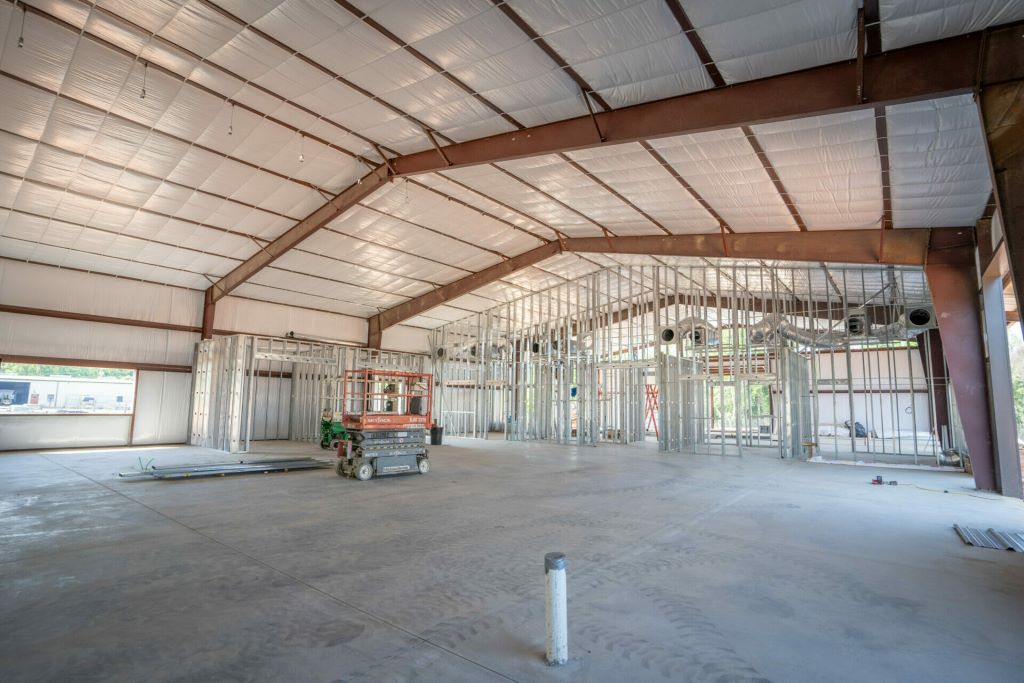In the realm of construction, choosing the right building material is paramount. Two popular options are metal and wood, each with distinct advantages. However, when it comes to strength, durability, and long-term cost-effectiveness, metal buildings often take the lead. Let’s delve deeper into why metal is a compelling choice for a wide range of structures.
The Strengths of Metal Buildings
- Unrivaled Durability: Metal buildings are renowned for their exceptional durability. They are resistant to rot, decay, pests, fire, and harsh weather conditions. Unlike wood, metal won’t warp, crack, or succumb to termites, making it an ideal choice for structures intended to withstand the test of time.
- Superior Strength: Metal’s inherent strength is a major advantage, especially in areas prone to earthquakes, high winds, or heavy snow loads. Metal frames offer structural integrity that can often surpass wood, providing greater peace of mind for building owners.
- Minimal Maintenance: One of the most appealing aspects of metal buildings is their low maintenance requirements. Unlike wood, which may necessitate regular painting, staining, or pest control, metal typically requires little more than occasional cleaning to maintain its appearance and functionality. This translates to significant cost savings over the lifetime of the building.
- Versatility and Design Flexibility: Metal buildings offer remarkable versatility in design. They can be customized to accommodate a wide range of purposes, from residential homes and commercial spaces to industrial facilities and agricultural structures. Metal panels can be shaped, textured, and colored to achieve a desired aesthetic, making them adaptable to various architectural styles.
- Sustainability and Environmental Friendliness: Contrary to what some might believe, metal buildings are often more sustainable than their wooden counterparts. Metal is a highly recyclable material, and many metal building components can be salvaged and reused at the end of a structure’s life cycle. Additionally, the production of steel, a common metal building material, has become more energy-efficient in recent years.
- Cost-Effectiveness in the Long Run: While the initial cost of a metal building might be slightly higher than that of a comparable wooden structure, the long-term cost-effectiveness is undeniable. The minimal maintenance requirements, longevity, and energy efficiency of metal buildings lead to significant savings over time, making them a financially prudent choice.
Related: How to Clean a Mobile Home Roof: A Step-by-Step Guide
Types of Metal Buildings
Metal buildings come in various types, each suited to different applications:
- Steel Buildings: Steel is the most common material for metal buildings, valued for its strength, durability, and versatility. Steel buildings can be used for a wide range of purposes, from garages and workshops to warehouses and industrial facilities.
- Aluminum Buildings: Aluminum is a lighter-weight alternative to steel, known for its corrosion resistance. It’s often used for carports, awnings, and other structures where a lighter material is preferred.
- Pre-engineered Metal Buildings (PEMB): PEMB are pre-designed and pre-fabricated metal building systems, offering a cost-effective and efficient construction solution. They are available in various sizes and configurations, making them adaptable to diverse needs.
Choosing the Right Metal Building
When considering a metal building, several factors are important:
- Intended Use: The purpose of the building will dictate the type of metal and design features needed. Consider factors like size, required insulation, and aesthetic preferences.
- Location and Climate: The local climate should be taken into account. If your area experiences extreme weather conditions, opt for a metal building designed to withstand those specific challenges.
- Budget: Set a realistic budget for your project, including not just the initial construction cost but also long-term maintenance and energy expenses.
- Reputable Contractor: Choose a reputable contractor with experience in metal building construction. They can guide you through the design and construction process, ensuring a successful outcome.
Real-World Applications
Metal buildings are found in a myriad of applications:
- Residential Homes: Modern metal homes offer stylish and energy-efficient living spaces.
- Commercial Buildings: From retail stores to office complexes, metal buildings provide versatile and durable commercial solutions.
- Industrial Facilities: Warehouses, manufacturing plants, and storage facilities often rely on the strength and longevity of metal structures.
- Agricultural Structures: Barns, stables, and equipment shelters benefit from the resilience of metal buildings in agricultural settings.
Conclusion
When strength, durability, and long-term value are top priorities, metal buildings stand out as a compelling choice. While wood has its merits, the exceptional qualities of metal make it a versatile and practical building material for a wide range of applications. Whether you’re considering a home, a business, or an agricultural structure, metal buildings offer a compelling combination of strength, durability, and adaptability.
I hope this article provides valuable insights into why metal buildings are often the superior choice. Let me know if you have any other questions!






